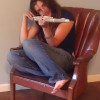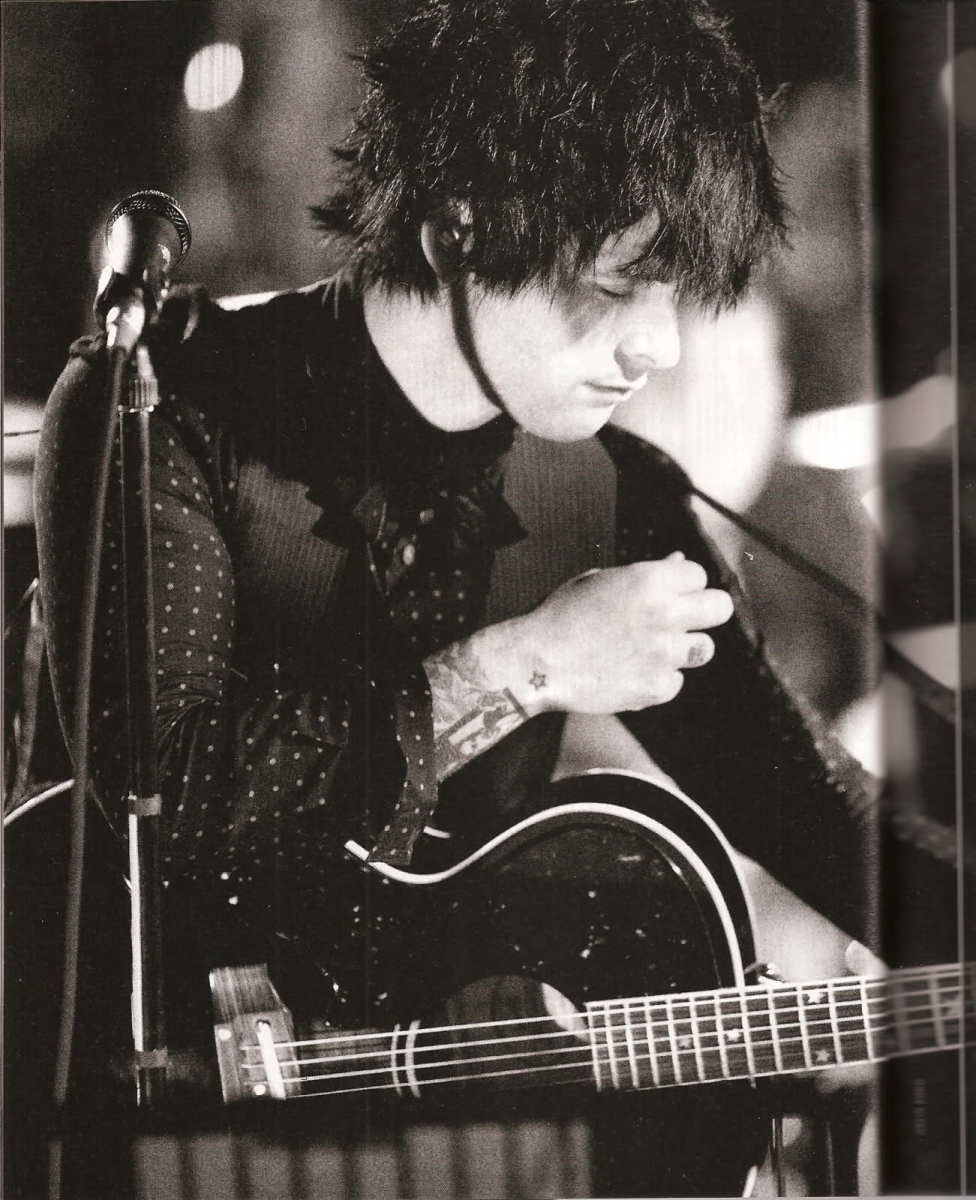How to Choose a Piccolo
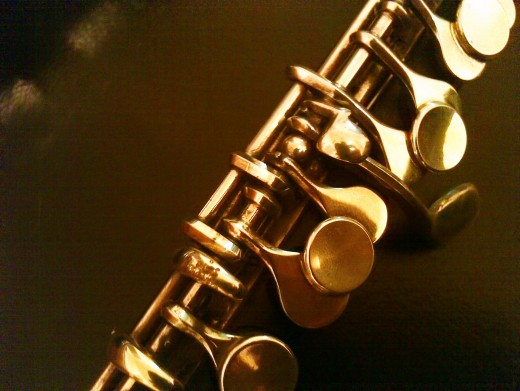
The first step in determining the best piccolo for your needs in deciding what your needs are. Some instruments are better suited for certain situations. Are you planning to use it solely for marching band, or only in an indoor concert setting? Do you need something more versatile that can produce a great sound while still standing up to the elements of the outdoors? Where you play can be a big factor in which material your instrument can be made of.
Materials
Metal
Metal piccolos are typically used in marching bands. THey have a very strong carrying power and are the most durable when in comes to standing up to the elements. THe metal will exxpand anc contract with temperature changes reather than crack the way wood can. Plactic piccolos can actually crack with very extreme changes, however it is unusual.
Piccolos made of metal aslo typicallly have a cyllindrical bore. This means the tube doesn't taper towards the end the way mostwood and plastic piccolos do. Sometimes when playing outdoors in the cold, condensation can build up more in a tapered (conical) bore than it would in the cyllindrical bore. (More on the pros and cons of conical bore later.
Usually metal piccolos are made of silver plated nickel. Some are solid silver. The sound quality tends to be bright and projecting. These qualities are preferred in a marching setting due to the distance from the audience and the bright nature of many marches.
Plastic
Plastic piccolos are the most versatile choice. They have a sweeter more mellow tone that fits well in a concert setting, but it can withstand the elements. It doesn't have quite the same carrying power of a metal piccolo, however... it is still a piccolo after all! It will be heard. In fact, being able to blend well with the rest of the band is a very important quality that is required of every great piccolo player. Within recent years many high quality makers of wooden instruments have been offering pro -level composite options for a great sound that can stand up to the elements. These would definitely be worth a look.
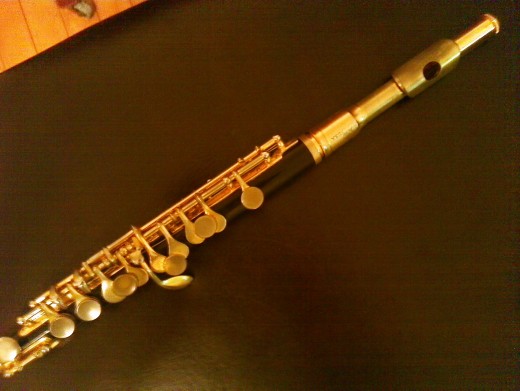
Combination
Combination piccolos are also availible. This is a plastic body piccolo with a metal headjoint. The sound quality lies somewhere between the two materials. Personally, if I were to select a piccolo that had to stand up to varied temperatures and humidity, I would choose all plastic over metal. This is a choive each individual must make for themselved based on the sound they prefer. That being said, every instrument is different. I played a metal piccolo for many years in a concert band. I've had several people tell me how surprised they were that the sound was so sweet. (If your interested in knowing, I played a Yamaha YPC-30 made around 1998)
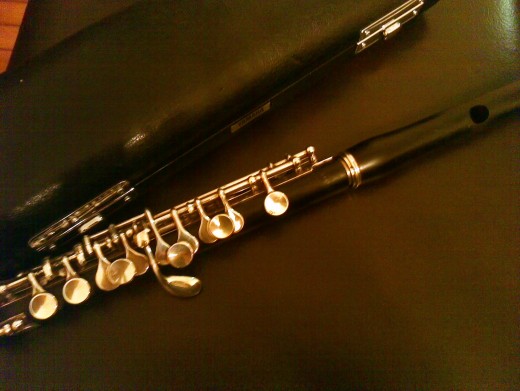
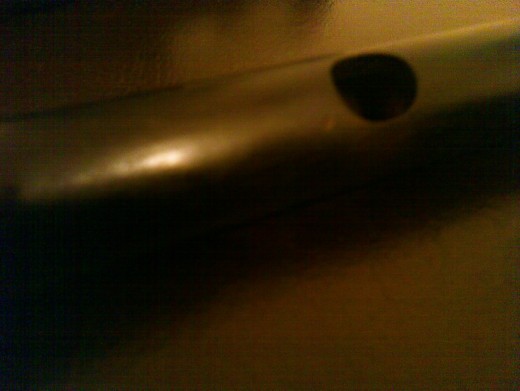
Wood
Wood is the ultimate choice among the vast majority of professional players. It is unfortunately also the most expensive choice. It is not recommended for marching band or outdoor use in inclement weather. Summer concerts on a nice sunny day should be fine, but you want to avoid extreme changes. As far as tone quality: if a plastic piccolo were cheddar cheese, a wooden one would be smoked cheddar. There is a greater variety of achievable tone colors and subtle nuances. Within the realm of wooded piccolos the options are infinite as far as tone quality. Every instrument is as unique as the wood it is carved from, so it's a good idea to try as many as you can before you buy. Even instruments of the same make and model can sound vastly different.
Price
Determine your budget before you start looking. If you find a piccolo of your dreams, but it's out of reach, the ones you try after that won't have a fair chance. You want to select the best instrument that you can afford. If you're in the market for a used car, chances are you won't go test drive a Rolls Royce. The Honda you end up with might be an awesome car, but you still may be disappointed after that experience. If you can afford the Rolls Royce... you can probably skip this section on price and buy any instrument you want.
Here's a break down of what you can expect to get for each budget range.
$500-$800: Entry level, a good solid metal or plastic piccolo that would be great for marching or occasional concert use.
$800-$1200: a high quality plastic or synthetic piccolo or used basic level wooden piccolo.
$1300-2000: a basic wooden piccolo ideal for someone majoring in music or preparing for a career in music. These piccolos may have plated keys and less handwork to keep costs down.
$2000-$5000: Piccoloists with established careers often play an instrument at this level. These instruments tend to have hand cut headjoints and should be exceptionally well made.
over $5000: This is the elite. These piccolos are for the cream of the crop players. If you are buying at this level, you probably know all you need to about making your choice and don't need to read this article.
Conical Bore vs. Cyllindrical Bore
This is not usually as large a factor in the decision as what material you choose. The material tends to dictate the shape of the bore, with some exceptions. In general metal piccs are cylindrical and plastic and wood bodies have a conical bore. Cylindrical piccolos are usually easier to play in the top register in comparison but conical piccolos are more even in tone and intonation throughout all registers.
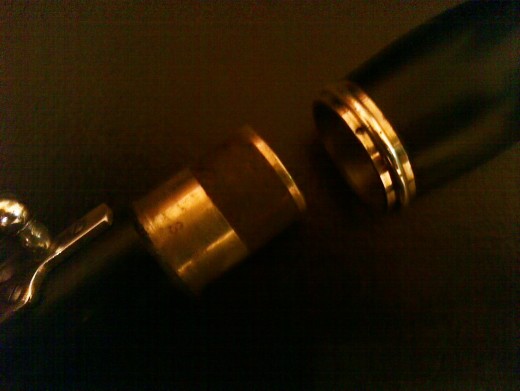
Bulb Style/Cork Tennon Headjoint.
This is only an option in plastic and wood bodied piccolos. In fact, until recently it was only available on wood piccolos and a select few plastic/metal combination piccolos. Very generally speaking, higher priced piccolos tend to have this style. (There are exceptions) The other option which most entry level instruments employ is a headjoint tenon which is more like a flute, where the headjoint slides into the body. With bulb style piccolos the head joint fits over a tenon that comes out of the body and is wrapped in cork. The player needs to ensure that the cork doesn't dry out by applying cork grease as needed. Eventually with age, corks can wear out and may need to be replaced. This is a minor inexpensive repair, though. The cork tenon creates a tight seal, and I speculate that having less metal on metal vibrating dampens the sound and reduces the possibility of shrill overtones. I'm not sure what the extent of this is, my guess is it would be very minuscule. The style of headjoint is not as important a factor in your choice as the sound of the instrument you choose. if you find a straight style headjoint that sounds better than the others that you try, go for it.
Wave Headjoint
This style of headjoint uses a raised blowing edge on the embouchure hole. This creates a cleaner more focused tone. This is another choice that is one of personal preference. Some players prefer the traditional headjoint, while others choose this option.
Split E Mechanism
This is a neat little option. It's an extra lever that stabilizes the High E, a note notorious for cracking on flutes and piccs. It works by closing the key below the G key when you play a high E. It's certainly not crucial, because with practice you can overcome that issue, but it's helpful.
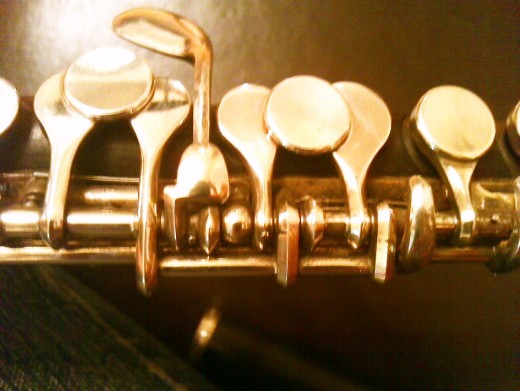
Types of Wood
The standard wood for piccolos is grenadilla or= African blackwood. This is the same wood that is typically used for clarinets and oboes. There are other options though (usually at a greater price) Different brands have different choices available. These may include ironwood, rosewood, brazilwood etc. Different densities of materials produce different sound qualities so each wood has subtle properties.
Testing an Instrument
This is especially important if you are buying an instrument in hopes to continue on with music in college and beyond. You want an instrument that will work well with your personal playing style, and allow you to grow as a musician. Testing the piccolo is also crucial for wooden instruments, since each one is unique even within the same model. Here are a few tips I recommend for play testing a picc.
1) If the room is cold warm the instrument up slowly with your hands first. Musical instruments play bettre warm than cold.
2) Play wooden instruments for at least 15-20 minutes, They don't always speak as easily before they're warmed up. You want to give the instrument a chance to reveal their true tonal properties.
3)Try several varieties of musical styles on each instrument: long tones, short articulated passages, many dynamic levels, and test in all registers.
4) The most important tip: take notes! Write down what you like and don't like about each one. After a while they all start to blend together. if you have a good tape recorder it would be a good idea to record your sessions. Remember to state which instrument you are playing on.
5) Check the workmanship. Each key should seal properly. The movement should be smooth. There should be no side to side movement in the keys. The headjoint should fit snugly, but not too tightly. It shouldn't wobble at all.
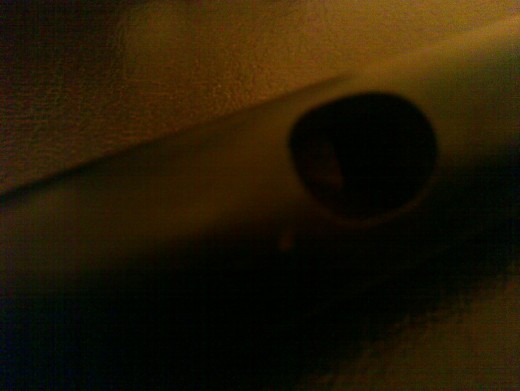
Advice on Buying Used
A used instrument could be a very econnomical choice, and might allow ou to get more piccolo for your money. However, you have to be careful, or you may end up spending more in repairs. If at all possible have a qualified repair tech look at it before you make your decision. At the very least you should budget for possible repairs in the future.Test the instrument first! There are some internet dealers such as flute world who offer trial programs.
Another good reason to by a used wooded piccolo is that the wood becomes more seasoned with age. Most hight=er end piccolos are made with seasoned wood already, but a more basic level wooden pic will improve in sound quality over the years. My own piccolo in a good example of this. It is a 10ish year old Yamaha YPC62 that I bought from a friend a few years ago. The price was right and I honestly liked the sound better than most of the others I tried. (with the exception of a certain Powell that I couldn't afford anyway.)
Brands
There are two things to consider when it comes to brands. Most important is the quality of brand, then the brand itself. Each brand will have a certain set of tonal propertied they strive for. Therefor you need to try a few or at least listen to a few to find one that will suit your style.
You do want to choose a reputable brand. If you are unfamiliar with flute and piccolo brands, you can ask your flute instructor or a collegue.
Here are a few suggestions for well known brands. *please be aware that I am going on reputation for many of these and have not sampled piccolos from all these brands. Also, some of these are brands that I would not personally choose, as they may not suit my style, but they may be right for you.
Under $700: Jupiter, Gemeinhardt, Armstrong
$700-$1200: Pearl, Gemeinhardt, Yamaha
$1200-$1900: DiMedici, Emerson, Gemeinhardt KG, Roy Seaman, Resona by Burkart, Yamaha
$2000-$5000: Burkart, Phillip Hammig, Powell, Roy Seaman, Yamaha
Over $5000: Burkarn, Haynes, Phillip Hammig, Powell, Sankyo,
There are others as well. If you find a breand you've never heard of it's a good idea to ask around and see what other people think of it. I'd stear clear of "no name" brands as that are nearly impossible to get parts for when they need repair. I once had a cheap unknown piccolo that came from e-bay. I bought it for marching band and only planned to play it a short time. I didn't want to spend much because I knew I would end up in bad weather with it. The sound was not great and it was extremely difficult to play.. It served it's purpose, but for an instrument you want to have for a while... don't take the risk, unless they have a good return policy.
